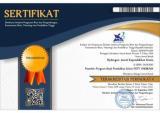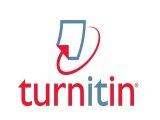Design of Augmented Reality Integrated Learning Applications on Acid and Base Subject Material for F Phase Students
DOI:
https://doi.org/10.33394/hjkk.v11i6.9551Keywords:
learning media design, augmented reality, acid and bases, chemistryAbstract
The aim of this research is to create integrated augmented reality learning media in the form of an application that focuses on the acid base material in the F phase or senior high school phase. Along with the development of the world of education, various kinds of new learning media have emerged. One of the interesting technologies that can currently be developed on Android is Augmented Reality (AR). Augmented Reality is considered one of the most advanced technologies in virtual reality research and is effective as a learning medium, especially chemistry. Augemented Reality is a technology that combines the real world with a computer-generated virtual world so that the boundaries between the two worlds are very minimal. Because of its advantages, AR can be used to create learning applications that can support the teaching and learning process. One lesson that can utilize this technology is chemistry learning about acids and bases. This application was created with Blender 3D software to create 3D acid base objects, Easy AR and Unity 3D to build applications. This media design was adopted by the Plomp development media. Where the design of this media is in accordance with the needs of schools which expect learning media to contain animation and be guided by questions that can guide students in discovering concepts. It is hoped that this learning application can be used at school and outside school as a support in learning chemistry, especially acids and bases.
References
Abdoli-Sejzi, A. (2015). Augmented Reality Dan Lingkungan Pembelajaran Virtual. Jurnal Penelitian Ilmu Terapan, 11(8), 1–5.
Abdul Majir. (2019). Blended Learning Dalam Pengembangan Pembelajaran Suatu Tuntutan Guna Memperoleh Keterampilan Abad Ke-21. Sebatik Jurusan PGSD, FKIP, Universitas Katolik Indonesia Santu Paulus Ruteng. , 359–366.
Atika & Latisma. (2022). Deskripsi Kesulitan Belajar Kimia Siswa pada Materi Asam Basa Kelas XI IPA di SMA Negeri 7 Padang. Entalpi Pendidikan Kimia, 18–26.
Azizah dkk. (2022). Analisis Miskonsepsi Dengan Tes Diagnostik Two-Tier Multiple Choice Dan In-Depth Interview Pada Materi Asam Basa. Jurnal Pendidikan Kimia, Program Studi Pendidikan Kimia, Universitas Sebelas Maret, 11(2), 168–177. https://jurnal.uns.ac.id/jpkim
Chen, C.-H., & Tsai, C.-C. (2021). In-Service Teachers' Conceptions of Mobile Techonology-Integrated Instruction: Tendency Towards Student-Centered Learning. Computers & Education, 104224, 170.
Indarta dkk. (2021). 21st Century Skills: TVET dan Tantangan Abad 21. Edukatif: Jurnal Ilmu Pendidikan, 3(6), 4340–4348.
Irwansyah dkk. (2018). Augmented Reality (AR) Technology on the Android Operating System in Chemistry Learning. IOP Conference Series: Materials Science and Engineering, 288(1), 0–7. https://doi.org/10.1088/1757-899X/288/1/012068
Ismayani, A. (2020). Membuat Sendiri Aplikasi Augmented Reality. Jakarta: Elex Media Komputindo
Khairini & Yogica. (2021). Pengembangan Media Pembelajaran Interaktif Berbentuk Android Packaging Kit (APK) Pada Materi Virus. Jurnal Penelitian Dan Pengembangan Pendidikan, 5(3), 406–413. https://ejournal.undiksha.ac.id/index.php/JJL/index%0APengembangan
Köse, H., & Güner-Yildiz, N. (2021). Augmented reality (AR) as a learning material in special needs education. Education and Information Technologies, 26(2), 1921–1936. https://doi.org/10.1007/s10639-020- 10326-w
Mustaqim, I. (2016). Pemanfaatan Augmented Reality Sebagai Media Pembelajaran. Jurnal Pendidikan teknologi dan kejuruan , 13(2), 174-183.
Nachairit & Srisawasdi. (2016). Using Mobile Augmented Reality For Chemistry Learning Of Acid-Base Titration: Correlation Between Motivation And Perception. Researchgate: Khon Kaen University, Khon Kaen, Thailand, February. https://www.researchgate.net/publication/294670016%0AUsing
Plomp & Nieveen. (2007). An Introduction to Educational Design Research (Tjeerd Plomp & Nienke Nieveen (ed.); Edisi 1). Proceedings of the seminar conducted at the East China Normal University, Shanghai (PR China), November 23-26, 2007.
Plomp & Nieveen. (2013). Educational design research (Tjeerd Plomp & Nienke Nieveen (ed.)).
Pramono, H. D. (2018). Penerapan Teknologi Augmented Reality Pada Game Pengenalan Hewan Berdasarkan Jenis Makanannya Berbasis Mobile. J-INTECH, 6(01), 166–172.
Putri & Muhtadi. (2018). Pengembangan Multimedia Pembelajaran Interaktif Kimia Berbasis Android Menggunakan Prinsip Mayer Pada Materi Laju Reaksi. IPTPI: Jurnal Inovasi Teknologi Pendidikan, 5(1), 38–47. http://journal.uny.ac.id/index.php/jitp
Rosma Aryani, P., Akhlis, I., Subali Jurusan Fisika, B., & Matematika dan Ilmu Pengetahuan Alam, F. (2019). Penerapan Model Pembelajaran Inkuiri Terbimbing Berbentuk Augmented Reality pada Peserta Didik untuk Meningkatkan Minat dan Pemahaman Konsep IPA. Unnes Physics Education Journal Terakreditasi SINTA, 8(2). http://journal.unnes.ac.id/sju/index.php/upej
Safitri, E., & Sa'dudin, I. (2019). The Use of Visual Media in Maharatah Al-Kalam Learning. Jurnal Al Bayan: Jurnal Jurusan Pendidikan Bahasa Arab, 11(1), 72-89.
Salawati, T., & Indrawati, N. D. (2015). Tahap Analisis Untuk Pengembangan “Asetaro†Komik Pendidikan Kesehatan UNTUK Anak Tentang Bahaya Merokok. Prosiding Seminar Nasional & Internasional
Sarkar, P., Kadam, K., & Pillai, J. S. (2020). Learners’ Approaches, Motivation and Patterns of Problem-Solving on Lines and Angles in Geometry Using Augmented Reality. Smart Learning Environments, 7(1). https://doi.org/10.1186/s40561-020-00124-9
Siirtola, H., Saily, T., Nevalainen, T., & Raiha, K.-J. (2014). Text Variation Explorer: Towards Interactive Visualization Tools For Corpus Linguistics. Internasional Journal of Corpus Linguistics, 19(3), 417-429.
Silberberg, M. S. (Martin S. (2013). Principles of General Chemistry (Third).
McGraw-Hill.
Supriono, N., & Rozi, F. (2018). Pengembangan Media Pembelajaran Bentuk Molekul Kimia Menggunakan Augmented Reality Berbasis Android. JIPI (Jurnal Ilmiah Penelitian dan Pembelajaran Informatika, 3(1).
Tanjung, S. (2015). Pengaruh Media Pembelajaran dan Gaya Kognitif terhadap Hasil Belajar Sejarah. Paramita, 25(2).
Turkan, Y., Radkowski, R., Karabulut-Ilgu, A., Behzadan, A. H., & Chen, A. (2017). Mobile Augmented Reality for Teaching Structural Analysis. Advanced Engineering Informatics,34,90–100. https://doi.org/10.1016/j.aei.2017.09.005
Wirya, W., Suyanto, E., & Suyadi, G. (2009). Identifikasi Masalah Kesulitan dalam Pembelajaran Kimia SMA Kelas X di Provinsi Lampung. Journal Pendidikan MIPA (JPMIPA), 10(2), 9–18.
Yildirim, F. S. (2020). The Effect of the Augmented Reality Applications in Science Class on Students’ Cognitive and Affective Learning. Journal of Education in Science, Environment and Health, 6(4).
Zahwa & Syafi’i. (2022). Pemilihan Pengembangan Media Pembelajaran Berbasis Teknologi Informasi. Equilibrium: Jurnal Pendidikan Dan Ekonomi, 19(01), 61–78. https://journal.uniku.ac.id/index.php/Equilibrium
Downloads
Published
How to Cite
Issue
Section
Citation Check
License
License and Publishing Agreement
In submitting the manuscript to the journal, the authors certify that:
- They are authorized by their co-authors to enter into these arrangements.
- The work described has not been formally published before, except in the form of an abstract or as part of a published lecture, review, thesis, or overlay journal.
- That it is not under consideration for publication elsewhere,
- That its publication has been approved by all the author(s) and by the responsible authorities – tacitly or explicitly – of the institutes where the work has been carried out.
- They secure the right to reproduce any material that has already been published or copyrighted elsewhere.
- They agree to the following license and publishing agreement.
Copyright
Authors who publish with Hydrogen: Jurnal Kependidikan Kimia agree to the following terms:
- Authors retain copyright and grant the journal right of first publication with the work simultaneously licensed under a Creative Commons Attribution License (CC BY-SA 4.0) that allows others to share the work with an acknowledgment of the work's authorship and initial publication in this journal.Â
- Authors are able to enter into separate, additional contractual arrangements for the non-exclusive distribution of the journal's published version of the work (e.g., post it to an institutional repository or publish it in a book), with an acknowledgment of its initial publication in this journal.
- Authors are permitted and encouraged to post their work online (e.g., in institutional repositories or on their website) prior to and during the submission process, as it can lead to productive exchanges, as well as earlier and greater citation of published work.
Licensing for Data Publication
Hydrogen: Jurnal Kependidikan Kimia uses a variety of waivers and licenses, that are specifically designed for and appropriate for the treatment of data: Open Data Commons Attribution License, http://www.opendatacommons.org/licenses/by/1.0/ (default) Other data publishing licenses may be allowed as exceptions (subject to approval by the editor on a case-by-case basis) and should be justified with a written statement from the author, which will be published with the article.









